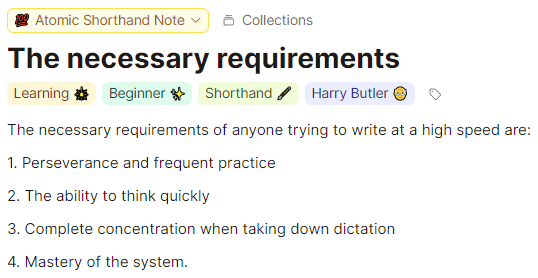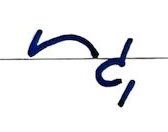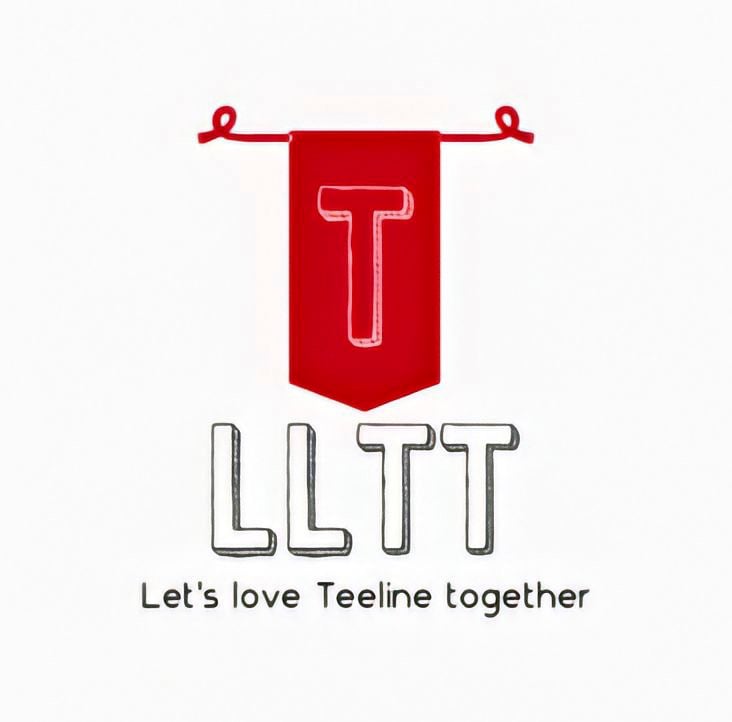LLTT Newsletter - April 2025

LLTT - April 2025

‘Quick Thinking’ in Teeline

Many who come to Teeline shorthand believe that rapid note-taking depends entirely on thinking quickly in the moment— a heroic feat of mental agility that some possess and others don't.
This perception misses the mark.
The seemingly effortless speed of expert shorthand writers only comes from thorough preparation, consistent practice, and methodical skill development.
Let’s look at a few ways you can develop this skill more predictably.
The Foundation
Before writing quickly, you must write correctly. The foundation of Teeline mastery starts with thoroughly understanding its alphabet and fundamental principles (theory!).
Start by immersing yourself in the Teeline alphabet. Practise each letter from A - Zed (and the letter combinations of CH, WH, SH and TH) deliberately and with careful attention to proper formation and placement. Don't rush— this investment pays off. Your goal isn't just memorising the shapes, but internalising them until writing becomes automatic. When character formation becomes unconscious, your mind focuses on content rather than mechanics.
The joining rules between letters matter equally. Practise these connections until they flow naturally as single, fluid movements rather than separate actions. This, too, allows you to build speed without sacrificing legibility.
Master word groupings and special outlines. Teeline offers numerous ‘abbreviations’ for common words and phrases. These aren't mere conveniences—they're essential tools that dramatically increase writing speed. Study the standard Teeline abbreviations and consider creating consistent personal abbreviations for terms in your field.
The Reading-Writing Connection
A paradox (👩⚕️ 👩⚕️) exists in shorthand development: to write faster, you must become a better reader. Fluent reading of printed Teeline remains one of the most overlooked aspects of speed development, yet historical shorthand literature consistently emphasises its importance.
Begin regular practice reading printed Teeline materials. Start simply and progress to more complex content. Read the same passages repeatedly until recognition becomes instant. Doing so imprints them on your brain, making recall more automatic.
Read your own notes regularly. This reinforces outline recognition and, more importantly, highlights your personal inconsistencies that might cause difficulties later. You need to pay special attention to any outlines you struggle to decipher, for they reveal opportunities for improvement. Teeline mastery is as much about shoring up your weaknesses as it is about playing to your strengths.
Transcription exercises connect reading and writing. Regularly read shorthand passages and transcribe them into longhand (but do not spend too much time transcribing longhand into shorthand - developing skill in Teeline is about hearing a word and developing the automaticity to immediately write it down). Compare your transcription with the original text to catch misreadings. This trains your brain to connect Teeline outlines and their meanings automatically.
A More Deliberate Path to Speed
Random practice yields random results. Approach speed-building as a deliberate progression.
Start with dictation at a comfortable speed where you maintain near-perfect accuracy. Establish your baseline, but in order to improve, you must drive yourself beyond it by gradually increasing your dictation work by 5-10 words per minute. If you are not uncomfortable during most of your revision work, then you are likely not progressing the way you could be.
You have heard that short, focused practice sessions beat lengthy ones. Vary your approach—sometimes write the same passage repeatedly at increasing speeds; other times practise with varied content for versatility.
Focus on transitions between words, where flow often breaks. Create drills for challenging combinations where you hesitate. Systematically eliminating hesitation points creates natural speed.
Remember: You will be "faster” when you have learned how to not be so slow on certain things.
Speed and Accuracy
Never, never, never forget this shorthand truth: speed without accuracy is worthless. Historical shorthand texts affirm, "Rapid writing is of no value if not done correctly." Reading your notes depends entirely on their legibility and correctness.
Assess yourself objectively. Record dictation sessions and analyze both speed and accuracy. Calculate effective words per minute—speed adjusted for accuracy—rather than raw speed alone. Track progress over time, noting patterns and plateaus. This approach targets practice efficiently.
Speed development rarely progresses linearly. During plateaus, refine your technique rather than pushing for more and more speed. Breakthroughs often come from removing subtle inefficiencies.
The Knowledge Advantage
Speed depends on cognitive preparation alongside technical proficiency. Keep in mind that subject familiarity reduces mental processing during dictation.
What to do? Expand your knowledge through wide reading. This creates context that helps you anticipate content during note-taking. Stay current with developments in your field — familiarity with terminology reduces cognitive load during professional note-taking.
You can train yourself to recognise speech patterns and anticipate context. Most speech follows predictable patterns. With practice, you can ‘begin’ forming outlines before speakers complete their thoughts, creating smooth writing flow.
Mental Conditioning
Concentration develops through deliberate practice. Start with short dictation sessions in quiet environments, then gradually increase duration and background distraction to build mental resilience.
Short-term memory plays a crucial role. While taking notes, you often need to hold phrases briefly while your hand catches up. But there is a danger in “carrying” too many words. You must be careful here.
Auditory processing speed improves with training. As your brain adapts to faster speech, previously overwhelming speeds become manageable. There isn’t a student that begins shorthand that believes this, but with persistence, they discover it is true. Persevere.
From Theory to Practice
Start using Teeline in low-pressure situations. Take notes during podcasts, recorded lectures, or television programmes where missing content has no consequences. As confidence grows, move to more challenging environments matching your intended use.
Different speakers present unique challenges—some speak clearly with measured pacing; others race through content with regional accents. Practise with varied speakers to develop adaptability.
Specialised content requires preparation. Before technical meetings, review relevant terminology and think about creating consistent outlines for likely terms.
Conclusion
Hopefully we have dispelled some of the myths around "thinking quickly" in Teeline. It is about thorough preparation, consistent practice, and methodical skill development. The effortlessness of expert Teeline writing masks thousands of hours of deliberate practice.
By building solid foundations, developing reading fluency, practising deliberately, and preparing cognitively, you create conditions where speed and accuracy emerge. Beginner hesitation disappears not by forcing speed but by eliminating conscious thought during writing.
The shorthand masters' wisdom remains true: "Make haste slowly." Mastery comes from respecting the process—building skills systematically until conscious effort becomes automatic. With dedication, your hand will flow across the page, capturing words as quickly as they're spoken, your apparent speed actually the culmination of more thorough preparation and practice.
Be sure to visit us at the LLTT Website, YouTube, Facebook, Instagram, Quizlet and Soundcloud.
If you’re looking for Teeline reading practice, Skill Building Through Reading 📗 - is available for purchase online.
Much work (and ❤️!) has gone into this 48 page, 6x9 softcover book:
Five 5️⃣ carefully selected passages: Improve your sight 👁️ recognition of outlines and word groupings.
Dual Format: Each passage includes both printed Teeline and the longhand ✍️ transcription.
Proven Learning Approach: Reading printed 🖨️ shorthand is a method long-favoured by skilled practitioners.
Whether you're a student, journalist, or professional seeking to improve your note taking, this book will be a valuable addition to your Teeline learning resources.
To order, please visit the book’s landing page or respond to this email with any questions.
If you find this newsletter helpful, please help us spread the word and forward to a friend!
A Parting Thought


Add a comment: